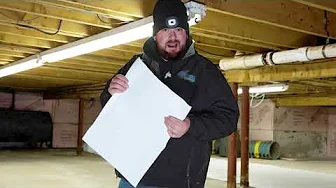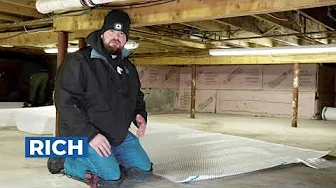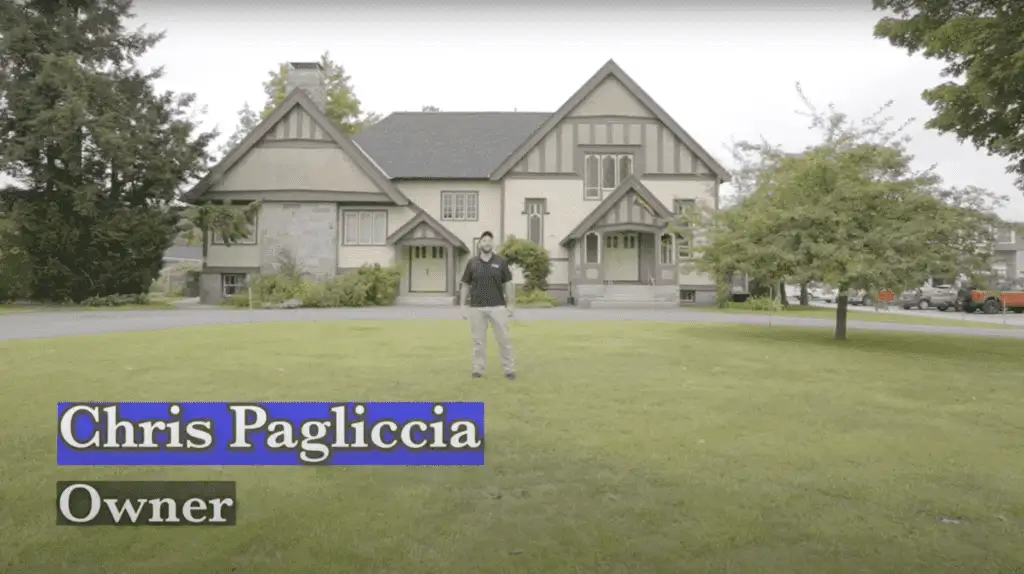Foundation Crack Repair New Castle NH
Foundation cracks can cause serious issues if left untreated. They may lead to leaks, structural instability, or even a decrease in property value. In New Castle, NH, where homes often endure environmental challenges such as coastal dampness and shifting soil, addressing foundation cracks quickly is necessary to maintain the integrity of your property.
Real People - Real Great Results
Crawl Space Video Playlist
Why Foundation Cracks Happen
Cracks don’t just show up out of nowhere—they’re a signal that something beneath your home has shifted, expanded, or otherwise lost its balance. If your foundation is sporting a few fissures, chances are one (or more) of these culprits is to blame:
- Soil Settlement: Every home sits on top of soil, and over time, that soil moves. It compresses, shifts, or even erodes, leaving gaps beneath your house. Foundations hate uneven support, so they respond by cracking, like a worn rubber band stretched too far.
- Temperature Changes: If you’ve lived through a New Hampshire winter, you’ve seen what temperature swings can do. Freeze-thaw cycles are relentless; water freezes, expands, and then contracts when it thaws, inflicting stress on anything in its way, including your foundation. It’s like nature’s slow-motion jackhammer.
- Excessive Moisture: Living in a coastal town like New Castle means you’re no stranger to dampness. Ocean air, high humidity, and the occasional nor’easter can saturate the soil around your home. Over time, that moisture has a way of sneaking in, weakening the concrete and setting the stage for cracks. Bonus points if the water freezes afterward.
- Poor Construction Practices: Nobody wants to think their home was built with shortcuts, but it happens. If the original foundation wasn’t properly reinforced or the concrete wasn’t allowed to cure correctly, cracks can sneak in faster than they might in a more solidly built structure.
The bottom line? Cracks don’t just appear—they’re evidence of movement, pressure, or wear. Identifying the why behind your foundation cracks isn’t just helpful; it’s critical. Fixing the symptoms is only temporary if you don’t address the root cause.
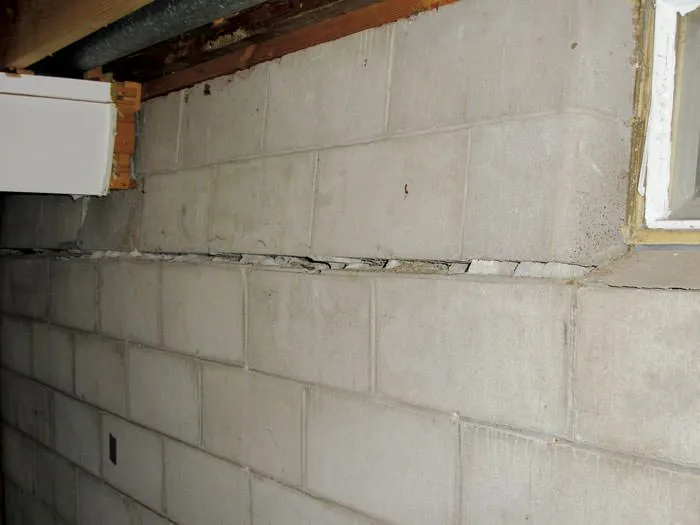
Types of Foundation Cracks You Might Encounter
Not all cracks are created equal. Some are harmless, others are warning lights on the dashboard of your home’s structural health. Here are the main types you’ll see:
- Vertical Cracks: These are the “least-alarming-but-don’t-ignore-it” type. Usually caused by normal soil settlement, they often show up shortly after construction or years later as the ground adjusts. While they may seem benign at first glance, skipping repairs could mean inviting water intrusion—a minor headache that could evolve into a full-blown migraine.
- Horizontal Cracks: If you spot these, stop scrolling Zillow and start dialing a pro. Horizontal cracks happen when lateral forces—think soil swollen with rainwater or coastal flooding—overpower your foundation wall. These are structural red flags and don’t fix themselves.
- Diagonal Cracks: The lopsided cousin to vertical cracks, these show up when one part of your foundation settles unevenly. Typically starting near a corner and angling downward, diagonal cracks can destabilize your home’s structural plane over time. Address them quickly to avoid the teeter-totter effect.
- Spider Cracks: The least ominous-looking on the list. These hairline fractures often span out in fine, web-like patterns across the concrete surface. On their own? Cosmetic. Combined with dampness or strange odors? A potential harbinger of deeper troubles—worth monitoring closely.
Each crack carries its own story, and understanding what it’s telling you is step one. Knowing the type helps you gauge how fast you need to move from “Hmm, that’s concerning” to “Who has a solid recommendation for a foundation specialist in New Castle?”
Solutions for Foundation Crack Repair
1. Epoxy Injections
When you’ve got a narrow crack that isn’t actively shifting or growing, epoxy injections are your go-to fix. This method doesn’t just seal the crack; it restores the concrete’s original strength by effectively “welding” the broken pieces together. Epoxy works especially well on vertical or small diagonal cracks, which are often caused by soil settlement. That said, it’s not ideal for cracks that are actively moving or subject to ongoing pressure. Precision is everything here—this repair demands clean surfaces and proper application, or it could fail to hold up over time.
2. Polyurethane Foam Injections
If water is the main culprit behind the crack, polyurethane foam injections are a more tailored solution. Unlike epoxy, which focuses on structural integrity, polyurethane foam expands within the crack to create a waterproof barrier. Think of it as plugging up leaks at the source. This method is particularly effective in places like New Castle, where coastal storms and high groundwater levels frequently test your foundation. Foam injections are versatile and can even handle shifting cracks to some extent due to their flexibility.
3. Carbon Fiber Reinforcement
When cracks suggest a deeper structural issue—like horizontal cracks from soil pressure—carbon fiber strips are your best shot at stabilization. Applied directly to the wall using industrial-strength epoxy, these strips act like a brace, preventing further movement without heavy excavation. Carbon fiber reinforcement isn’t meant to cover minor problems—it’s a heavy lifter for serious threats. Homeowners looking to avoid the invasive nature of underpinning often choose this middle-ground solution.
4. Underpinning
This is the nuclear option for severe foundation issues. Underpinning involves excavating beneath the foundation and installing piers or similar supports to bolster the home’s stability. It’s the most effective fix for homes suffering from uneven settling or significant cracks caused by poor initial construction. Given New Castle’s sandy coastal soil, underpinning is occasionally necessary for long-term foundation health. It’s not cheap, and it’s not fast, but for homes dealing with chronic instability, it’s the foundation repair equivalent of a new lease on life.
5. Waterproofing Systems
Often, addressing the root of the problem goes hand-in-hand with repairing the crack. For homes in wet or coastal areas, waterproofing systems are more preventive than reparative but remain a crucial part of the equation. Exterior waterproofing membranes shield foundation walls, while interior drainage systems and sump pumps keep water from accumulating where it can do damage. Combined with crack repairs, these systems can turn a perpetually damp basement into a dry, usable space.
Repairing foundation cracks isn’t a one-size-fits-all scenario. Each approach has its strengths, and the right choice depends entirely on the crack’s type, size, and what’s lurking behind it. In New Castle, where harsh weather and shifting soils are part of life, knowing your options is half the battle. The other half? Taking action before a crack grows into a crisis.
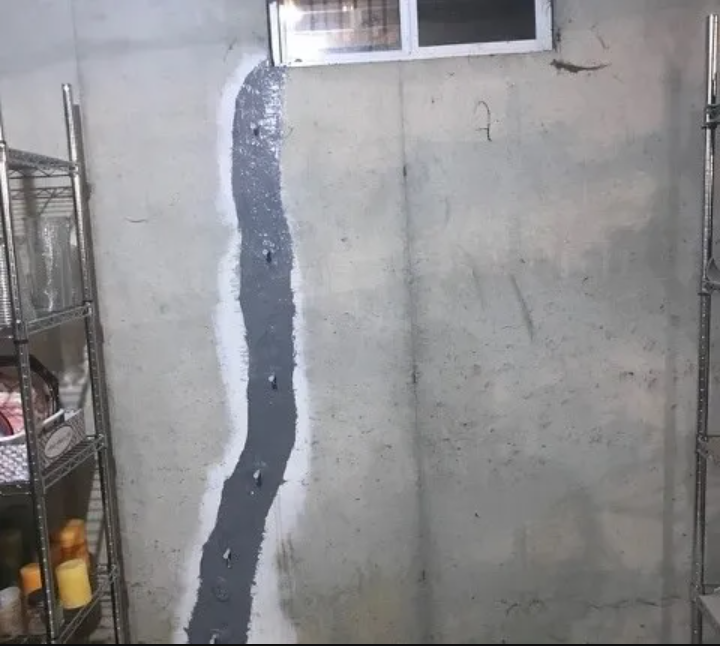
Why Speed Is Critical in Foundation Repairs
Foundation damage doesn’t wait for convenience—it compounds. A small, seemingly insignificant crack today can turn into a major structural headache tomorrow. In New Castle, NH, where coastal conditions hasten wear-and-tear on homes, delaying repairs only stacks the odds against you.
Here’s the hard truth: cracks don’t heal themselves. They widen. They invite water to infiltrate, triggering a chain reaction of problems like mold infestations, sagging walls, and foundation shifts. That “simple repair” you procrastinated on? It just doubled—or tripled—in cost.
Temperature extremes and moisture levels in New England only add fuel to the fire. Freeze-thaw cycles expand small cracks into larger fractures, while consistent humidity and saltwater exposure degrade materials faster. Your home’s foundation isn’t playing a waiting game, and neither should you.
A fast response not only halts the progression of damage but also preserves your home’s value and livability. Act now, and you’re solving a small puzzle. Wait, and you’re rebuilding the whole jigsaw. When it comes to foundation repairs, speed isn’t just wise—it’s non-negotiable.
How To Prevent Future Foundation Cracks
Prevention beats repair every time—especially when it comes to something as critical (and costly) as a home’s foundation. In areas like New Castle, NH, where coastal conditions and shifting soils aren’t exactly kind to concrete, taking preemptive steps can save you from headaches, heartaches, and hefty invoices down the line. Here are the key strategies:
- Improve Drainage: Bad drainage is a foundation’s worst enemy. Start with the basics: check that your gutters and downspouts are doing their jobs. Water should be traveling away from your foundation, not pooling around it. Need a little extra muscle? Install a French drain or extend your downspouts. A dry perimeter equals a happy foundation.
- Manage Soil Moisture: The soil around your home shouldn’t be swinging wildly between soaked and parched. Both extremes are bad news—too much water causes soil expansion, while too little leads to shrinkage, and both will stress your foundation. Consider landscaping smartly with moisture-stabilizing plants or using soaker hoses strategically during dry spells.
- Maintain Proper Grading: Your yard’s slope is more important than you think. Ideally, the ground should drop about six inches within the first ten feet from your home. This keeps water moving away rather than settling in for an all-you-can-erode buffet right beside your foundation.
- Repair Small Cracks Immediately: That hairline crack you’ve been shrugging off? It’s not harmless. Small cracks are gateways for moisture, which can weaken the foundation or coax an infestation of mold to move in. Tackle them as soon as they appear with the right filler—epoxy, polyurethane, or another pro-recommended material.
Good prevention doesn’t just protect your home; it protects your wallet. By staying ahead of the game, you avoid escalating damage that could turn a minor DIY repair into a major professional overhaul. For New Castle homeowners dealing with ocean air and shifting ground, these steps aren’t just smart—they’re necessary.
When To Call a Professional
Not every crack in your foundation is a do-it-yourself project. Some signs demand the trained eye of a professional, and ignoring them could lead to costly, avoidable damage. So, when is it time to bring in an expert? The general rule is this: if it makes you pause and wonder, it’s probably worth a call.
For starters, size matters. A crack wider than 1/4 inch isn’t just a cosmetic nuisance; it’s a flashing red light that something structural could be amiss. Horizontal cracks or those that snake in a stair-step pattern across your foundation are even more concerning. These often point to significant pressure—either from shifting soil or hydrostatic forces—and are beyond the scope of hardware-store quick fixes.
Another undeniable clue: your home’s behavior. Doors that jam, windows that refuse to slide, or floors that feel like they belong in an amusement park funhouse are all indications of a shifting foundation. These movements suggest the issue goes deeper than surface-level cracking and requires professional assessment.
Moisture is another dealbreaker for DIY. If water is trickling, seeping, or outright pouring through a crack, it’s not just weakening the foundation—it’s inviting mold and long-term damage into your home. Professionals can not only repair the crack but also address the underlying water management issues.
Lastly, consider the unknown. Foundation repair isn’t just about filling in gaps; it’s about understanding why the damage happened and ensuring it doesn’t happen again. A licensed expert can diagnose the root cause, whether it’s soil instability, poor drainage, or something unique to the coastal environment in New Castle, NH.
When in doubt, err on the side of caution. Waiting too long or attempting the wrong fix could turn a manageable issue into a financial headache. Calling a professional early saves you time, money, and the stress of wondering whether you’ve done enough. Leave the heavy lifting to someone trained for the job—your foundation will thank you.

Conclusion
Foundation crack repair is not just a maintenance task—it’s an investment in the long-term stability of your home. For homeowners in New Castle, NH, the combination of coastal humidity, shifting soil, and New England’s punishing freeze-thaw cycles makes vigilance critical. Left unchecked, a small crack can snowball into a costly ordeal, jeopardizing your property’s structural integrity and value.
The key is simple: act early. Learn to spot the warning signs, understand the repair options, and don’t hesitate to call in a professional for serious issues. Whether it’s a quick epoxy injection or an extensive underpinning project, addressing foundation cracks promptly gives you peace of mind and protects your most significant asset. In a rugged New England town like New Castle, taking foundation care seriously isn’t just smart—it’s essential.
Reviews from Happy Customers
Our top priority is customer satisfaction, and we work closely with clients to understand their unique needs and goals.




